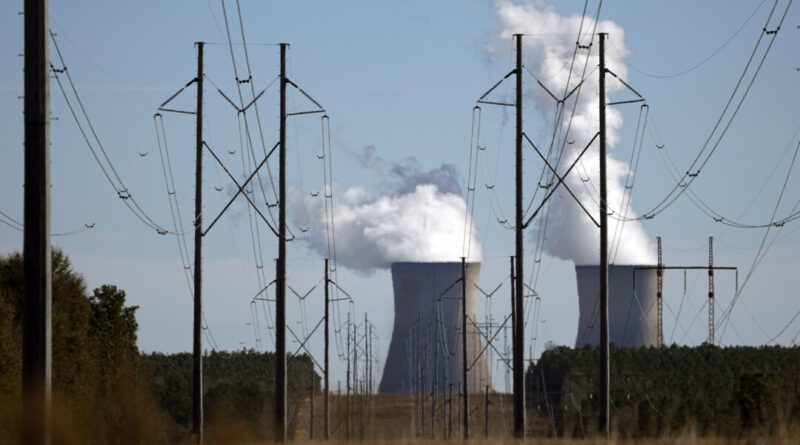Harnessing Nuclear Power for Cost Savings and Environmental Protection: Expert Insights
Robert Parker concurs with the Opposition’s view that Australia needs a responsible electricity mix.
To address Australia’s escalating energy bills, politicians must avoid turning the nuclear versus renewable energy debate into a divisive issue akin to Ford versus Holden Supercars supporters, according to Robert Parker, the founder of Nuclear for Climate Australia.
Parker, a former president of the Australian Nuclear Association, asserts that the nation’s power grid can effectively incorporate all types of energy sources, including coal, natural gas, renewables like wind, solar, and battery power, as well as nuclear energy.
If a Dutton Liberal government is elected in the upcoming federal election, they would aim to achieve this balanced energy mix, as per Parker.
In contrast, the current Albanese Labor government is focused on pursuing a renewables-only agenda in its pursuit of reaching ‘Net Zero’ carbon emissions.
“The Coalition’s energy policy is not about a nuclear-only solution,” Parker informed The Epoch Times.
He added, “We’ll achieve the most cost-effective energy solution while also reducing emissions. The key is to move away from the polarized debate between nuclear and renewables.
“Both can coexist, and I believe it’s important to convey this to prevent falsely polarizing the issue.
“It’s like choosing to support Holden or Ford. That’s not the framing we want to use.”
Nuclear is Safe, and Harmless on Flora and Fauna
Minister for Climate Change and Energy Chris Bowen argues that the country’s transition to renewable energy is the most cost-effective way to modernize the energy grid.
He highlighted the rising costs and construction durations associated with nuclear energy reactors.
Citing GenCost, the annual collaboration between Australia’s CSIRO and AEMO, Bowen emphasized that renewable energy offers a cost-effective and environmentally friendly future for the country’s energy needs.
“Renewables continue to be the most economical option for new electricity generation in Australia until 2050, considering all associated costs like storage, transmission, and firming,” Bowen stated.
“GenCost indicates that introducing large-scale nuclear energy in Australia is not feasible before 2040, with estimated costs ranging from $145 to $238/MWh.
“Even if small modular nuclear reactors could be operational by 2030, which is currently not the case, the cost of their power could reach up to $487MWh.”
However, Parker witnessed firsthand the financial efficiency and environmental benefits of nuclear energy in Korea and Canada, advocating for its integration into Australia’s energy mix.
“Nuclear energy offers a sustainable energy source with minimal impact on the environment, landscapes, and agricultural lands,” he explained.
“It reduces the need for extensive land usage and deforestation for wind farm construction.
“With a low geographic and materials footprint, nuclear energy utilizes only one-fifth of the non-renewable materials consumed by renewables.
“Therefore, for a truly sustainable option, nuclear energy surpasses wind and solar energy. Choosing nuclear over wind and solar would be more beneficial in the long run.”
We Have Cheap, Low-Emissions Power
Parker also pointed to Ontario in Canada and France as examples of countries successfully embracing nuclear energy.
Canada has been a pioneer in nuclear research and technology, with approximately 15 percent of its electricity coming from nuclear power.
With 17 reactors primarily located in Ontario providing 12.7 GWe of power capacity, Canada plans to develop both large-scale nuclear capacity and small modular reactors.
“The global experience demonstrates that nuclear energy is the quickest way to deploy a fleet and reduce carbon emissions,” Parker emphasized.
“For instance, France constructed 58 reactors and 63 GWe of power capacity in just 22 years.
“Australia has the potential to emulate Ontario’s success. By collaborating, NSW, Victoria, Queensland, and South Australia could replicate a similar rollout within two years.
“This is the direction we need to take. Between 2040 and 2055, we can establish a modest nuclear fleet to stabilize energy prices in the long run.”
Electricity Bills to Continue Rising
Parker warned that transitioning to 100 percent renewable energy sources would result in exorbitant costs, which current estimates by proponents of wind, solar, and battery electricity fail to consider.
“Currently, the average rooftop has about 3-5kW of panels. However, to meet AEMO’s requirement of 84GWe of rooftop solar, the area needs to be doubled or tripled for each roof,” he explained.
“Achieving this scale necessitates solar panels on every rooftop in Australia along with batteries for energy storage.
“The total cost, including solar panels and batteries, would amount to about $40,000 per household.
“Yet, none of these costs are factored into the estimated expenses of the renewables rollout, as outlined by Bowen.”
Nevertheless, Bowen argued that the costs of renewable energy are declining.
“GenCost reveals that firmed renewables, with transmission and storage costs, offer the cheapest electricity ranging from $80MWh to $122MWh in 2030, accounting for 80 percent of variable generation,” he stated.
“This data indicates that despite global inflation, renewable technology costs are decreasing. Costs for large-scale batteries have dropped by 20 percent, utility solar costs have decreased by 8 percent, and onshore wind infrastructure costs are stabilizing after an 8 percent increase last year, now rising only by 2 percent.”





